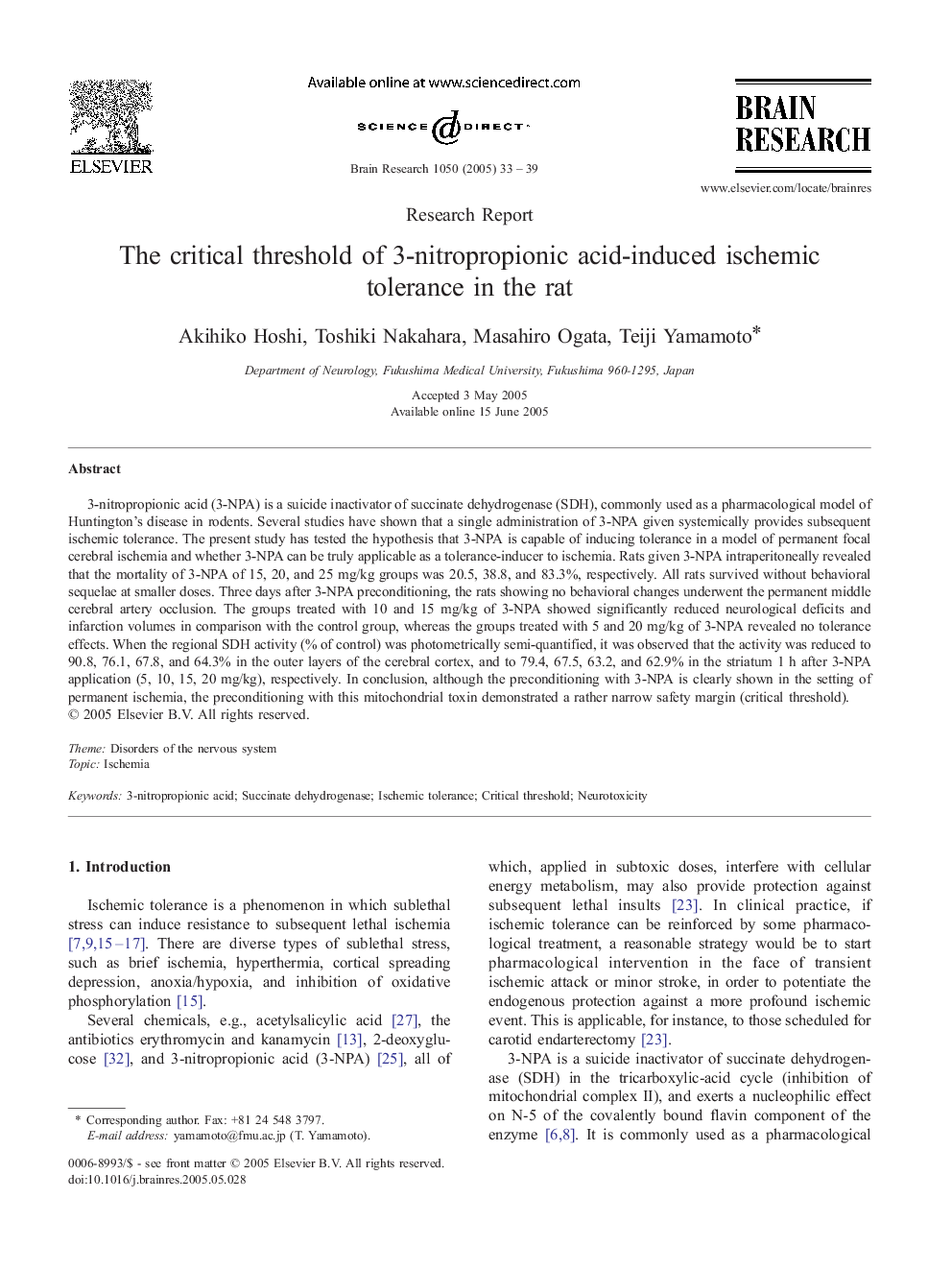| Article ID | Journal | Published Year | Pages | File Type |
|---|---|---|---|---|
| 9416123 | Brain Research | 2005 | 7 Pages |
Abstract
3-nitropropionic acid (3-NPA) is a suicide inactivator of succinate dehydrogenase (SDH), commonly used as a pharmacological model of Huntington's disease in rodents. Several studies have shown that a single administration of 3-NPA given systemically provides subsequent ischemic tolerance. The present study has tested the hypothesis that 3-NPA is capable of inducing tolerance in a model of permanent focal cerebral ischemia and whether 3-NPA can be truly applicable as a tolerance-inducer to ischemia. Rats given 3-NPA intraperitoneally revealed that the mortality of 3-NPA of 15, 20, and 25 mg/kg groups was 20.5, 38.8, and 83.3%, respectively. All rats survived without behavioral sequelae at smaller doses. Three days after 3-NPA preconditioning, the rats showing no behavioral changes underwent the permanent middle cerebral artery occlusion. The groups treated with 10 and 15 mg/kg of 3-NPA showed significantly reduced neurological deficits and infarction volumes in comparison with the control group, whereas the groups treated with 5 and 20 mg/kg of 3-NPA revealed no tolerance effects. When the regional SDH activity (% of control) was photometrically semi-quantified, it was observed that the activity was reduced to 90.8, 76.1, 67.8, and 64.3% in the outer layers of the cerebral cortex, and to 79.4, 67.5, 63.2, and 62.9% in the striatum 1 h after 3-NPA application (5, 10, 15, 20 mg/kg), respectively. In conclusion, although the preconditioning with 3-NPA is clearly shown in the setting of permanent ischemia, the preconditioning with this mitochondrial toxin demonstrated a rather narrow safety margin (critical threshold).
Keywords
Related Topics
Life Sciences
Neuroscience
Neuroscience (General)
Authors
Akihiko Hoshi, Toshiki Nakahara, Masahiro Ogata, Teiji Yamamoto,
